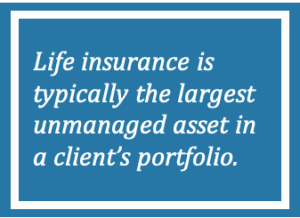Pacific Prime Fundamentals Explained
Pacific Prime Fundamentals Explained
Blog Article
Pacific Prime Things To Know Before You Get This
Table of ContentsThe Single Strategy To Use For Pacific PrimeUnknown Facts About Pacific PrimeIndicators on Pacific Prime You Should KnowHow Pacific Prime can Save You Time, Stress, and Money.Getting The Pacific Prime To Work

This is due to the fact that the information were accumulated for a duration of strong financial performance. Of the approximated 42 million individuals that were uninsured, almost concerning 420,000 (regarding 1 percent) were under 65 years of age, the age at which most Americans become qualified for Medicare; 32 million were adults in between ages 18 and 65, about 19 percent of all grownups in this age; and 10 million were youngsters under 18 years old, regarding 13.9 percent of all children (Mills, 2000).
These quotes of the number of persons without insurance are created from the yearly March Supplement to the Present Population Study (CPS), carried out by the Census Bureau. Unless otherwise kept in mind, nationwide quotes of individuals without medical insurance and percentages of the population with various sort of protection are based on the CPS, one of the most extensively used source of estimates of insurance policy protection and uninsurance rates.
Some Known Incorrect Statements About Pacific Prime

Still, the CPS is particularly helpful because it generates annual estimates relatively rapidly, reporting the previous year's insurance policy protection approximates each September, and because it is the basis for a consistent collection of estimates for greater than two decades, enabling analysis of trends in coverage in time. For these factors, in addition to the considerable use the CPS in other studies of insurance coverage that are offered in this record, we rely upon CPS quotes, with restrictions noted.

The quote of the variety of without insurance individuals expands when a populace's insurance coverage standing is tracked for a number of years. Over a three-year duration beginning early in 1993, 72 million individuals, 29 percent of the U.S. https://on.soundcloud.com/Boznd6XKBGjyrspT8. population, lacked protection for a minimum of one month. Within a solitary year (1994 ), 53 million people experienced at the very least a month without insurance coverage (Bennefield, 1998a)
6 out of every ten without insurance grownups are themselves used. Although working does improve the chance that a person and one's member of the family will certainly have insurance coverage, it is not an assurance. Even participants of families with 2 permanent wage income earners have practically a one-in-ten opportunity of being uninsured (9.1 percent without insurance price) (Hoffman and Pohl, 2000).
Pacific Prime - Questions
New immigrants account for a significant proportion of people without medical insurance. One analysis has associated a substantial portion of the recent growth in the size of the U.S. without insurance populace to immigrants that showed up in the nation between 1994 and 1998 (Camarota and Edwards, 2000). Recent immigrants (those who pertained to the United States within the previous 4 years) do have a high price click for source of being without insurance (46 percent), yet they and their kids represent just 6 percent of those without insurance policy across the country (Holahan et al., 2001).
The relationship in between health insurance and access to care is well established, as recorded later on in this phase. The connection between health insurance and health and wellness results is neither direct nor easy, a substantial professional and health and wellness services research literary works links health insurance policy protection to better accessibility to care, much better quality, and boosted individual and population wellness standing.
Levels of evaluation for taking a look at the effects of uninsurance. It concentrates specifically on those without any type of health and wellness insurance for any type of length of time.
Facts About Pacific Prime Uncovered
The issues dealt with by the underinsured are in some respects comparable to those encountered by the without insurance, although they are normally less severe. Wellness insurance policy, nevertheless, is neither required neither adequate to gain accessibility to medical solutions. The independent and straight effect of wellness insurance protection on accessibility to health solutions is well established.
Others will acquire the health treatment they require even without medical insurance, by spending for it out of pocket or seeking it from service providers that supply care free or at extremely subsidized prices. For still others, medical insurance alone does not make certain receipt of treatment because of various other nonfinancial barriers, such as an absence of healthcare suppliers in their area, restricted access to transportation, illiteracy, or etymological and social differences.
All About Pacific Prime
Official study about without insurance populations in the USA dates to the late 1920s and early 1930s when the Board on the Price of Healthcare created a collection of reports concerning financing physician office check outs and hospitalizations. This issue became significant as the varieties of medically indigent climbed up during the Great Depression.
Report this page